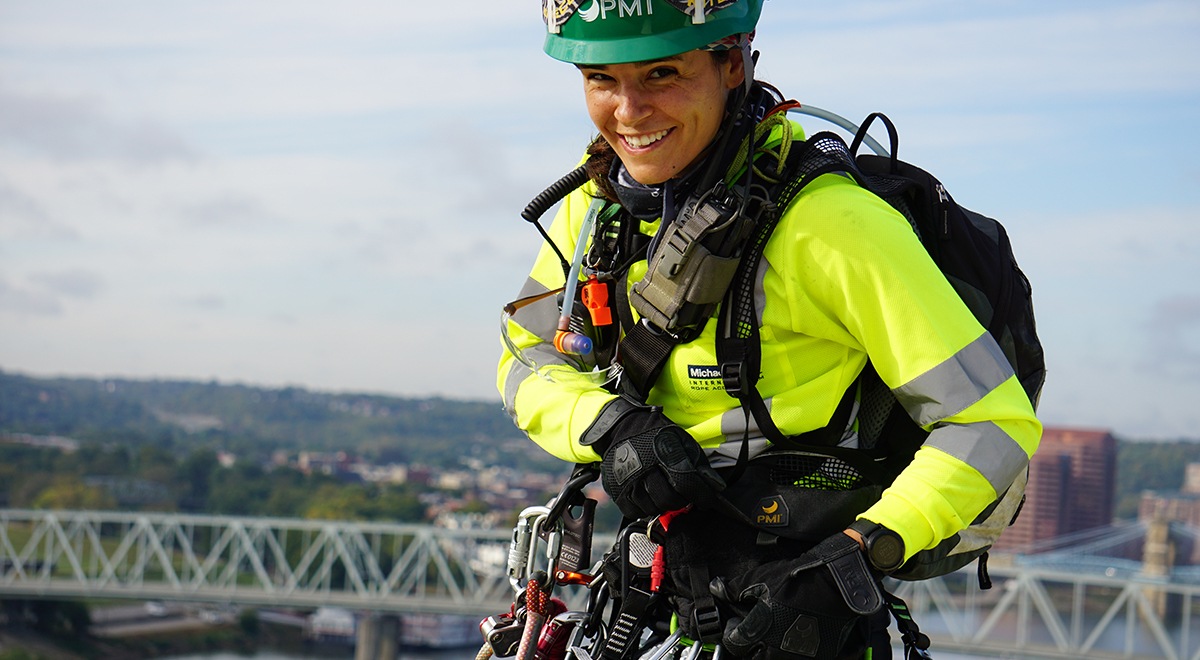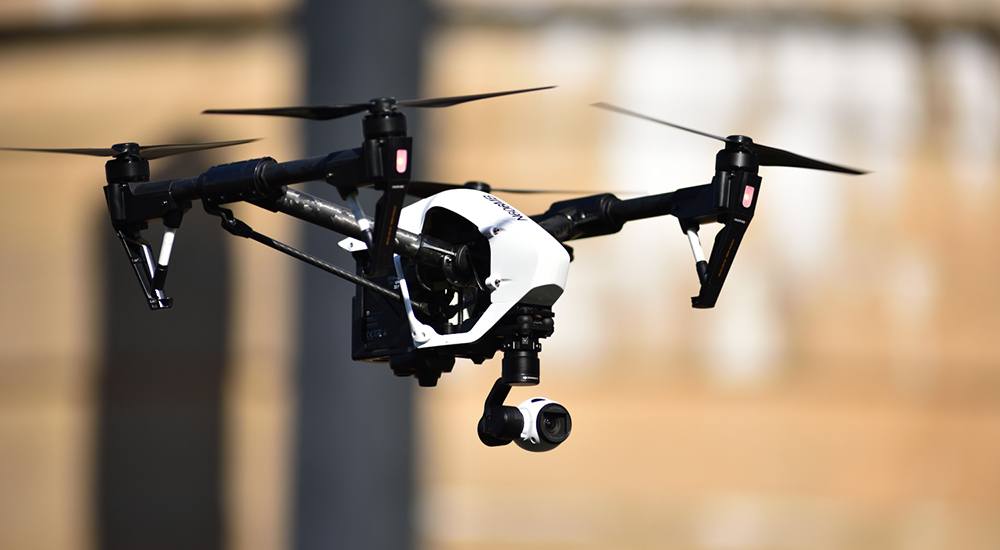How Michael Baker’s connected/automated vehicle teams are designing intelligent transportation and improving safety
From the Winter 2018/2019 issue of Signature
The quickest way between two points is a straight line. But that doesn’t necessarily make it the safest, most appealing or most efficient.
That’s why Michael Baker International has immersed itself in two major independent projects – one in Pennsylvania and the other in neighboring Ohio – establishing new facilities to conduct real-life, real-time, real-impact research on making vehicles and the roadways on which they travel better equipped to protect motorists.
The first has been dubbed “PennSTART,” a planned high-speed test track and transportation facility for research, testing and training designed to accelerate innovation in safety testing and training for traffic incident management, work zones, railways and aircraft; connected and autonomous vehicle testing; and tolling and intelligent transportation systems technology testing. A unique collaboration between the Pennsylvania Turnpike Commission (PTC), Pennsylvania Department of Transportation (PennDOT) and Pennsylvania State University, the nearly $24 million project has been funded by the three partner organizations and will be located in the State College, Pa., region.
PennSTART, to be located on a new 110-acre site, will feature a 1.5-mile high-speed oval test track and an 80-acre infield where advanced testing and training environment and a future academic research and technology testing laboratory will be placed. As proposed, PennSTART can test more than 75 percent of U.S. DOT-related vehicle technology applications.
“The PTC completed the initial feasibility study, and now PennDOT is leading Phase 2, systems engineering,” said Mark Kopko, manager of advanced vehicle technology at PennDOT. “Michael Baker was responsible for preparing the initial feasibility study and is currently involved with the systems engineering consultant team developing the concept of operations, conducting the requirements gathering and developing a business plan.
“This is a complex project where almost everything is on a critical path. So coordination and project management are essential to ensure the facility is fully operational by 2021,” Kopko noted. “This controlled environment will be valuable to test a number of applications before they go live outside in actual situations. There’s a variety of different things we’re going to be doing, including hands-on traffic incident management training, aviation disaster recovery, connected intersection configurations, gauging new work zone safety measures, testing high-speed ITS applications and more.”
PennSTART stemmed from a traffic management incident analysis by the PTC, which led to the need for more research in high-speed tolling and connected vehicles, explained Troy Truax, AICP, who is managing the PennSTART project for Michael Baker. He added that connected vehicles can “talk” to other vehicles or information transponders stationed along roadways to measure speed and braking, warn of lane departures and provide other key safety-related information to vehicles and their drivers.
“The Pennsylvania Transportation Advisory Committee’s 2013 study of traffic incident management (TIM) called for a statewide approach to standardize TIM training, education and research,” Truax said. “This study served as the foundation for the PennSTART concept that was further explored through the PTC’s July 2018 feasibility study and ultimately to the current PennDOT, PTC and Penn State’s systems engineering effort.”
Phase 1 includes designing and building the track, Phase 2 covers the infield administrative and laboratory buildings, and Phase 3 will see construction of the aviation on-ground emergency response simulator.
“I find the unique partnership of Penn State, PTC and PennDOT tremendous,” said Eric Donnell, director of the Larson Transportation Institute at Penn State, who is working with Michael Baker on the feasibility study, concept design and preliminary engineering of the project. “The closed-loop environment will be safer for this than a live road environment. Various roadway types – including roundabouts, railroad crossings, ramps, intersections, more than just the oval track – can be used. We can test in conditions across all four seasons and in a rural environment.”
“All of the partners have very regular interactions with Michael Baker, and we are thoroughly enjoying it,” Donnell said. “They are not only a very professional, knowledgeable and team-oriented company, their level of enthusiasm is exciting.”
Just over the state line into Ohio, the 33 Smart Mobility Corridor can be found. Michael Baker plays a prominent role as coordinator and adviser on the 33 Smart Mobility Corridor project as well, providing program management and technical oversight for the implementation of connected vehicle technologies along a 35-mile section of U.S. Route 33 between and within the City of Dublin and the City of Marysville near Columbus, Ohio. The firm will lead the program to install connected vehicle roadside devices and smart traffic signals, equip up to 1,200 vehicles with connected vehicle technology and develop a network to manage the data and overall system.
More than 50,000 vehicles travel daily on the corridor’s mix of local, arterial and collector streets, and multi-lane divided highway ramps, providing fertile research opportunities to create real-world testing conditions for connected vehicle technologies.
“Researchers had discovered that while vehicles and roads may be safer overall, the number of crashes are not continuing to decrease,” explained Lori Duguid, P.E., PTOE, associate vice president at Michael Baker and project manager for the 33 Smart Mobility Corridor project. “Driver distraction and driver error remained an issue. So while waiting for driverless cars to reach the market, vehicles that can talk to each other and to the infrastructure itself can help meet that need for now. That’s a major part of what the 33 Smart Mobility Corridor project will be accomplishing.
“What makes 33 different is its size and geography,” Duguid continued. “The project also is outfitting vehicles for this connected technology. Michael Baker will oversee installation of connected technology into vehicles. We are working to have the infrastructure for connected vehicles in place in 2019, with full deployment in 2020.”
With multiple Ohio local government players, including Dublin, Marysville and Union County, which have all formed a council of governments that holds the grant providing funding for the project, communication and cooperation remain critical.
“These are groups that usually compete for grant money, but that are now cooperating under a single grant,” said Matt Smith, P.E., associate vice president and national connected and automated vehicle program manager from Michael Baker. “Plus, you have the Ohio Department of Transportation, DriveOhio, universities and private industry to promote advanced mobility technologies. As we work to coordinate efforts among all of these interested parties, we are building a model for others to follow.
“Connected vehicle technology is still relatively new to the transportation world, and totally unique in Ohio,” said Smith. “This technology has the ability to tap into more areas like traffic signals, roadway design and public involvement – a big piece of communicating and explaining why it’s important and how it can work to make traveling safer and more efficient.”
“The Michael Baker team has all our bases covered to ensure we successfully deploy the infrastructure and comply with the terms of the federal U.S. DOT grant,” said Megan O’Callaghan, P.E., public works director in Dublin, Ohio. “They have experience in delivering projects with Federal Highway Administration and DOT oversight and working with local governments, and they understand the different perspectives at the table.
“From a technical standpoint, the team has the knowledge and experience to ensure our connected vehicle environment will be on the cutting edge,” O’Callaghan continued. “They understand the importance of the connected vehicle deployment to the region and are leveraging knowledge gained from other test cases around the county to benefit our schedule.”
Eric Phillips, executive director of the Union County Community Improvement Corporation, shared O’Callaghan’s sentiment.
“Michael Baker definitely has the experience and wherewithal to bring us together as a group,” said Phillips. “They are our partner to bring this to reality, currently working on the pilot. Next year, we move to more practical steps. We can’t wait – life will be a lot better with an operational system. The hard part for now is staying our front, staying focused on our goals.
“How aspirational can we be?” Phillips asks. “We are hoping to improve human experience in mobility and safety, reduce congestion, improve employment access since workforce development is such a top issue here, and expand inter-vehicle connectivity and autonomy.
“In short, we want to be a leader in this, a testbed,” he said. “There’s Silicon Valley, there’s the Research Triangle, and we want to be known as the logistics mobility hub, creating options for the world to benefit from. This project is attracting companies here, too. Some 70 automobile-sector companies are based in this region. They’re interested in the logistics and innovation research being done, this disruptive technology, this playground we’re creating.”




